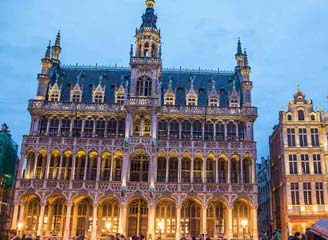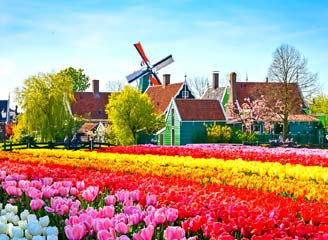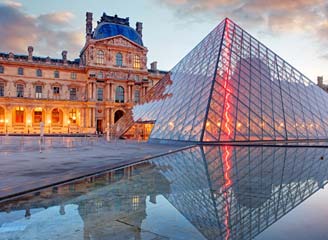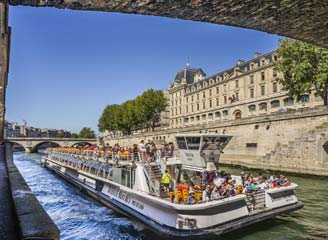Taj & Raj Routes
9 Days / 8 Nights
- STARTS New Delhi
-
DESTINATION
+1
- Jaipur
- ENDS Udaipur
Highlights
- See Mehrangarh Fort, Jaswant thada and Mandore Gardens - Jodhpur
- Visit City Palace, Crystal Gallery and Saheliyon ki Bari - Udaipur
- Enjoy cultural dance show at Baggore ki Haveli
- Visit Amber fort, Jal Mahal and Hawa Mahal - Jaipur
- Visit Red Fort, Jama Masjid, Qutub Minar, Lotus temple in Delhi
- See the beauty of Taj Mahal and Agra fort in Agra.
Itinerary
-
Introduction
Rajasthan which is also known as the “Land of Maharajas”The glory of the state is retained by its majestic palaces, forts and monuments. The vibrant culture and rich heritage of this princely state draw innumerable tourists from across the globe.
-
1Day 1ARRIVE DELHI
India’s capital and a major gateway to the country, contemporary Delhi is a bustling metropolis, which successfully combines in its folds - the ancient with the modern. Amidst the fast spiralling skyscrapers the remnants of a bygone time in the form of its many monuments stand as silent reminders to the region’s ancient legacy. The first impressions for any visitor traveling in from the airport are of a spacious, garden city, tree-lined with a number of beautiful parks.
Overnight at Hotel
-
2Day 2IN DELHI
After breakfast proceed for tour of Old and New Delhi. Old Delhi, the Mughal Capital of Shahjahanabad. Visit the Jama Masjid which is the principal mosque of Old Delhi in India. Commissioned by the Mughal Emperor Shah Jahan, builder of the Taj Mahal, and completed in the year 1656 AD, it is the largest and best-known mosque in India. It lies at the origin of a very busy central street of Old Delhi, the Chawri Bazar Road. The mosque of Friday was built from 1644 to 1658 during the reign of Shahjahan. The mosque is 80 m long and 27 m wide. The courtyard can accommodate 25,000 worshippers and occupies 408 square feet.
Later we proceed to visit Raj Ghat where Mahatma Gandhi – The Father of Nation, was cremated and drive past the Red Fort [ from outside] - the palace for Shahjahan’s new capital, Shahjahanabad, the seventh Muslim city in the Delhi site. Wander in the busy streets of the mile long Chandni Chowk, popularly called “The Silver Street”. Enjoy the ‘Cycle Rickshaw’ ride in Old Delhi.
In the afternoon proceed for tour of New Delhi, which reflects the legacy the British left behind. The division between New and Old Delhi is the division between the capitals of the British and the Mughals respectively. The division in the walled city and New Delhi also marks the division in the life-styles. The walled city is all tradition where one will be able to glean a past life-style in all its facets, colours and spells. New Delhi in contrast, is a city trying to live up to the best of 21st century standards.
The tour to Imperial Delhi will start by visit to the Qutab Minar, the tallest stone tower in India. The Qutab Minar was started in 1199 AD by Qutab-ud-Din Aibak and completed by the sultan's successor and son-in-law, Iltutmish. The building is 72.5 m high and has 379 steps from the bottom to the top. The Minar is tapering with the diameter of the base is 14.3 m while at the top floor it is 2.7 m. The Qutab Minar is still the highest stone tower as well as one of the finest Islamic structures ever raised in India.Later visit Humayun’s Tomb, built by the widow of the second Mughal Emperor, Humayun, it is an outstanding monument in the Indo-Persian style, a precursor of the Taj Mahal.
Drive past the imposing India Gate, the Parliament building and the Rashtrapati Bhawan, the President’s residence.
Overnight at Hotel
-
3Day 3DELHI – AGRA (203 KMS)
After breakfast drive to Agra; Arrive Agra and transfer to your hotel. Agra came into limelight during the rule of Afghan King Sikandar Lodhi - who had made it the capital of his empire. Later in 1526 A.D., the Mughal Emperor Babar took upon himself the task for rendering Agra, a unique character and beauty of its own. Agra - in terms of ambiance is still associated with its Mughal period. The Mughals besides being great rulers were also great builders and they preserved their best architectural wonders for Agra & its neighbourhood. It has many wonderful monuments and the Taj Mahal, the greatest of them all, is a masterpiece of Mughal architecture at its best.
Later visit the Taj Mahal (closed on Friday) - The Taj Mahal (closed on Friday) - The Taj Mahal is everything that has been said about it and more. Built by the Mughal Emperor Shah Jahan as an expression of his love for his wife Mumtaz Mahal, in mid-17th century, the Taj Mahal is truly one of the wonders of the world. Though the Taj appears to be amazingly perfect from almost any angle, it is the close-up marble inlay work, which is really astounding.
Later visit The Agra Fort, an outstanding example of Mughal architecture. Agra Fort - the seat and the stronghold of the Mughal Empire under successive generations. This was the seat of Mughal rule. Shahjahan added the impressive quarters and the mosque while Aurangzeb added the outer ramparts. Visit its Hall of Public Audience and its Royal Pavilions. Besides the historical monuments, one can also explore Agra’s rich heritage of handicrafts in its markets.
Also visit Itmad ud Daula -This tomb was built in 1622 for Ghiyas Beg, father of Empress Noor-Jahan, the wife of Emperor Jahangir. It is beautifully conceived in white marble, mosaic and lattice and set a precedent as the first Mughal building to be faced with white marble inlaid with contrasting stones. Sometimes also called ‘Baby Taj’, it is small, intimate and has a gentle serenity.Overnight at Hotel
-
4Day 4AGRA – JAIPUR (250 KMS)
After breakfast proceed drive to Jaipur visiting Fatehpur Sikri enroute. The deserted red sandstone city was built by the Great Mughal Emperor, Akbar, as his capital and palace in the late 16th century. It was abandoned soon after it was built when the local wells went dry and it remains today in much the same condition that it was over 300 years ago. It is complete with palaces and mosques and used to be a town larger than London when it was originally constructed. Now it is an extraordinary place to wander around with its buildings in near perfect condition.
Later drive to Jaipur; arrive Jaipur and transfer to hotel.
The capital of Rajasthan Jaipur - popularly known as the “Pink City” as the Pink sandstone was used to construct the buildings in the old walled city. Jaipur owes it’s name, it”s foundation and it’s planning to the Great-Warrior-Astronomer Maharaja Jai Singh II (1699–1744 AD). Jaipur (City of Victory) was founded by Maharaja Sawai Jai Singh II in 1727. It is the only city in the world symbolising the nine divisions of the Universe through nine rectangular sectors sub-dividing it. The architect who formalised the city’s plans on the Shilpa Shastra, the epic Hindu treatise on architecture, mixed it with the sublimity of the Mughal and Jain influences of those times. The city was painted pink in 1853 in honour of the visit by Prince Albert. Except for the busy traffic of bicycles, cars, and buses, little seems to have changed.
Overnight at Hotel
-
5Day 5IN JAIPUR
After breakfast proceed for full day Jaipur City Tour – visiting Amer Fort located at a distance of 11 kilometres from Jaipur and was the old fort of the Kachhwaha clan of Amber. It used to be the capital, till it was moved to Jaipur. The fort is built with white marble and red sandstone and looks even more attractive because of the Maota Lake in the foreground. The fort in itself is a beautiful sight to behold but as one looks on the fort with its clear reflection on the lake in the front; one cannot help but wonder if it is a dream or a beautiful illusion. An elephant [Subject to availability/alternatively by jeep] will spare you the trouble of climbing up to the fortress. Once on top, stroll through the sprawling complex of courtyards and halls with a well informed and well spoken guide who would regale you with tales of yore.
Later visit the City of Jaipur. Among the highlights to be seen while touring Jaipur include the City Palace, which is an overwhelming complex of exquisite palaces, gardens and courtyards, decorative art and carved doorways. The palace museum houses collections of rare manuscripts, armours, costumes, carpets and miniature paintings. Walk to the adjacent Jantar Mantar or Astronomical Observatory made by the Maharaja of Jaipur, built in 1726 and is one of the five such astronomical wonders built by Sawai Jai Singh and makes accurate predictions even to this day. Jaipur is a shopper’s paradise. Most of the bazaars are in an old city with a wide range of things to buy, from jewellery (precious and semi-precious stones and handcrafted silver) to textiles to handicrafts and antiques. No doubt, for an avid shopper “Jaipur” is the choicest of the city to shop and collect memorabilia.
Overnight at Hotel
-
6Day 6JAIPUR – JODHPUR (350 KMS)
After breakfast drive to Jodhpur; Arrive Jodhpur – Arrive to the Blue City – Jodhpur and transfer to your hotel.
An oasis in the arid Thar Desert, Jodhpur is the second largest city in the state of Rajasthan. Representing this colourful city with shades of blue, Jodhpur has a history that is rich and a present that beckons strongly to the discerning tourist. Forts and palaces, temples and havelis, culture and tradition, spices and fabrics, colour and texture, Jodhpur has them all and in plenty. Situated in Western Rajasthan, Jodhpur has long attracted both the domestic and outside tourist. It not only offers tangibles, in terms of what you can see and buy but also fills one with a sense of history and the splendours of an era gone by. The hospitality of the locals, the demure women, and the colourful turbans -all set against the beloved desert (Marwar) is something to feel, not just see. Every pore of Jodhpur tells its own tales of heroic deeds that made legends out of kings and soldiers, romances that continue to warm the heart and a time when epics were lived out on the streets by everyday man.
Later proceed for half day Jodhpur City Tour . Visit the Meherangarh Fort, situated on a low sandstone hill. The palace apartments like Sukh Mahal, Phool Mahal, and Sheesh Mahal etc are beautifully decorated and house Jewellery, costumes, armoury, palanquins, howdahs and other remnants of the past. See the Jaswant Thada, an imposing marble memorial to Maharaja Jaswant Singh II built in 1899. Later the royal crematorium and three other cenotaphs were also built here. Also visit Sardar Bazaar and Clock Tower markets where you can see the vegetable, spice, Indian sweets, and textile and silver markets. These colourful markets with tiny shops dot the narrow lanes replete with woodcarvings, wrought iron, lacquer work, silver and ivory ornamentation and leather handicrafts.
Overnight at Hotel
-
7Day 7JODHPUR – RANAKPUR – UDAIPUR (300 KMS)
After breakfast proceed drive to Udaipur enroute visiting Ranakpur – It is the largest Jain temple complex in India and dates to the 15th century. The main temple is dedicated to Adinath, the first Tirthankar. Intricate carvings detail mythological figures, patterns and motifs on the walls, pillars and domes. There are 1444 ornately carved marble pillars in the complex and none of them are similar. The beautiful lace-like interiors of the domes are a superb example of western Indian temple style. Surya temple and other Jain temples are side attractions. (Temples open only at 1200 Hrs. Leather belts, footwear, bare legs and black clothing not allowed).
Later drive to Udaipur; Arrive Udaipur and transfer to your hotel. Set on the shores of Lake Pichola and surrounded by hills, Udaipur grew in complete contrast to the harsh deserts of the rest of Rajasthan. As capital of the old Mewar State it was the only Rajput stronghold to uphold its Hindu allegiance in the face of Muslim invasion. This fairy – tale city, with its marble palaces and lakes surrounded by a ring of hills, was founded by Maharana Udai Singh in 1559. The city is dominated by massive City Palace, which overlooks Lake Pichola with its romantic island palaces. Picturesque havelis, ghats and temples line the lake front, with the lively bazaars of the old walled city stretching behind them.
Overnight at Hotel
-
8Day 8IN UDAIPUR
After breakfast proceed for half day Udaipur City Tour – visiting the City Palace and Museum. The largest palace complex in India, it is a blend of Mughal and Rajput influences. Also, see the 17th century Jagdish temple, drive around the Fatehsagar Lake, and visit the Sahelion ki Bari (the Garden for the Maids of Honour), an ornamental pleasure garden with fountains and marble kiosks. Later visit the Bharatiya Lok Kala Mandir or the Folk Art Museum.
Later in the evening take a boat ride on the 4 km long and 3 km wide Lake Pichola, which is fringed with hills, palaces, havelis, ghats, embankments and temples and offers spectacular views of the city. Visit the Jag Mandir Island with its exquisite Gul Mahal Pavilion.
Overnight at Hotel
-
9Day 9DEPART UDAIPUR
In time transfer to Udaipur Airport / Railway Station to board your flight / train for onward journey to your next destination.
~~~~TOUR ENDS~~~~
What's included
• 08 Nights accommodation basis at the hotel mentioned above or similar category of alternate hotels.
• Meal Plan – Daily buffet breakfast at all the hotels.
• Representative for assistance on arrival and departure transfers.
• All transfers, city tours and transport services by air conditioned All India Tourist permit vehicle as per the above itinerary.
• Road taxes, parking fee, fuel charges, interstate taxes.
Not included
• GST 5%
• MONUMENTS Entrance Fee.
• Services of English Speaking Local Guide.
• Elephant Ride & Jeep Ride at Amber Fort in Jaipur..
• Jeep Safari in Jodhpur.
• Common Boat Ride on Lake Pichola in Udaipur
• Anything which is not mentioned under “INCLUDES” header.
• Optional Tours which is not mentioned in the itinerary.
• Expense of personal nature like tipping, laundry, telephone / fax calls, alcoholic beverages, camera/video camera fee at monuments, medical expenses, airport departure tax etc.Any other services not mentioned in the inclusions
• International or Domestic airfare / Train Fare
• Any expenses caused by reasons beyond our control such as road blocks, accidents & any medical evacuations. Any train delays, or re-scheduling etc. Any Visa fees, insurance fees, etc. Any tips to hotel staff, local guides, drivers etc. Any meals apart from the ones mentioned above. Any expenses apart from the ones above.
FlyinGroups Ad Commercial 2019
Terms & Conditions
• Check-In time is 1400 hrs & Check-out time 1200 NOON at all hotels.
• KINDLY NOTE FOR THE SAFETY & SECURITY OF OUR GUESTS, WE DON’T ALLOW DRIVING AT NIGHT, HENCE REQUEST GUESTS TO LEAVE IN TIME SO THEY CAN REACH NEXT DESTINATION BEFORE 2000 HRS.
• In case of any amendment in local Government taxes, or any fuel hike, we reserve the right to adjust the tour price accordingly.
• Please note, the names of hotels mentioned above only indicate that our rates are based on usage of these hotels. It is not to be construed that accommodation is confirmed at these hotels until and unless we convey the confirmations to you on receipt of your acceptance. However in the event of any of the above mentioned
hotels not being available at the time of initiating the reservations, we shall book alternate accommodation at a similar or next best available hotel and shall pass on the difference of rates (supplement/reduction whatever applicable) to you.















